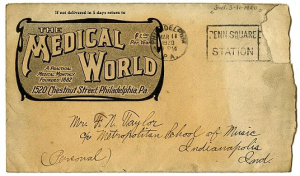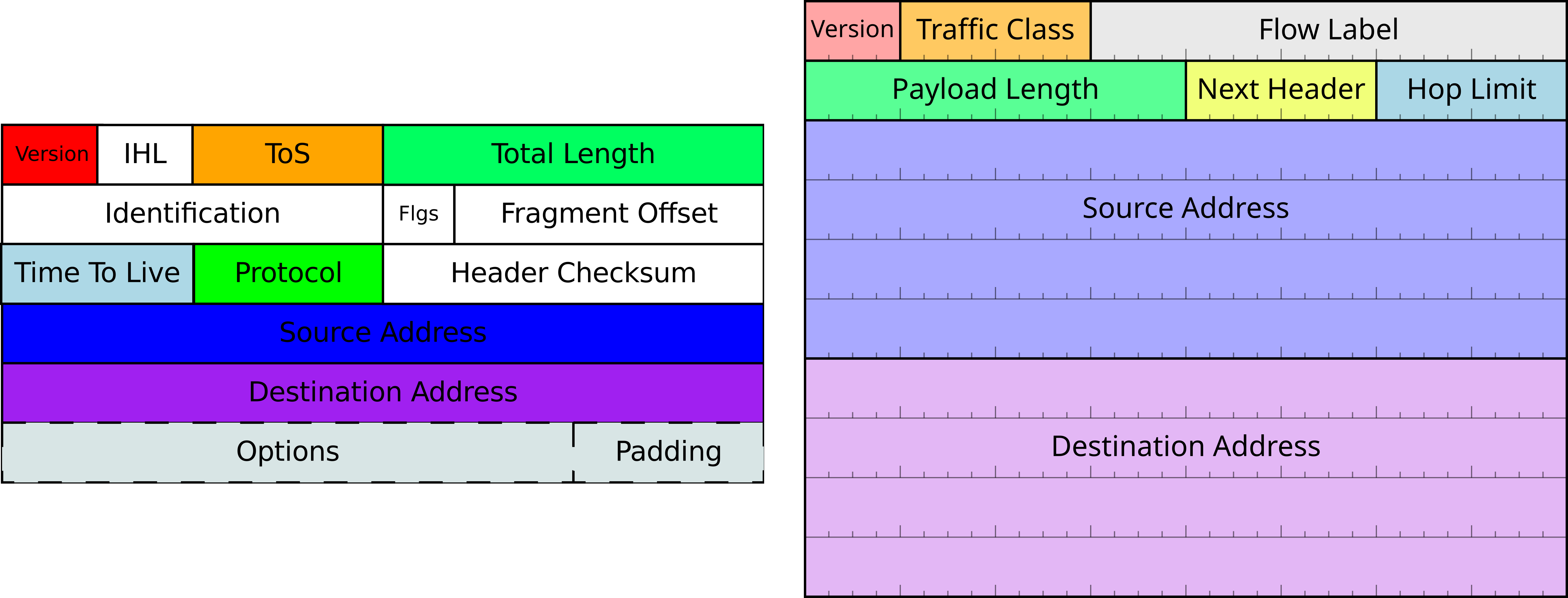A Performance Comparison of IPv4 and IPv6

IPv4 is still the dominant version of the Internet Protocol, 30 years after the initial IPv6 standard was published. Is IPv4’s resilience based on a performance benefit? Are the paths taken by IPv6 longer or shorter than IPv4? Is there more latency on IPv6 connections? Is deploying IPv6 going to give a performance advantage to users or the businesses that serve them?
Packet Headers
Data is sent over the network in packets. The packets are like a postal letter and the packet headers are like the envelope. They provide information about the sender, the recipient, and some other important details.

Envelope showing sender, destination, and processing franks
IPv6 addresses are longer than IPv4 addresses: 128-bits versus 32-bits. But IPv6 packet headers are simpler and that means less processing by the network infrastructure.

IPv4 and IPv6 packet headers, by Mro, CC BY-SA 3.0
The IPv4 packet header varies in length from 20 to 60 bytes. The IPv6 header is always 40 bytes. The fixed length reduces the computation load for network components. But IPv4 packet headers can be smaller.
Because most network devices are specialized for handling IP packets, there is very little difference between IPv4 and IPv6 packet performance. Where there is a difference, it can depend on the nature of the traffic going over a network.
Path Length
Geoff Huston, APNIC’s Chief Scientist, has been measuring the internet for over 20 years. One of the measurements he’s been taking is the average AS path length. An AS, or Autonomous System, is a network managing its own internet access. In general, that means networks that connect to two or more other networks, rather than relying on a single network for internet access. An AS path is the route data takes when it goes from source to destination. It’s a bit like flying from Hawaii to Frankfurt and passing through Los Angeles and New York.
On average, an IPv6 packet passes through just over 4.8 ASs, while an IPv4 packet passes through just over 5.2. These numbers are very similar and the differences are so small as to have very little impact.
The AS path length is sometimes referred to as the diameter of the internet. It has remained remarkably stable for about 20 years.
Latency
AS path length could have an impact on reliability but if everything is working, people care about latency. That is the time it takes for data to get from its source to its destination.
The IPv6 Matrix project has been measuring this with ping data for 14 years. They have been measuring the difference between IPv4 and IPv6. Their chart shows a significant difference in 2011 and 2012 but that has narrowed. Since 2017, there has been very little difference – although these longitudinal measurements are made from five, relatively rich, western-hemisphere countries.
They also have a data table showing measurements for 46 countries. This shows an average IPv6 ping time of 90ms and an average IPv4 ping time of 140ms.
While that difference is proportionally significant, does it mean that IPv4 performance is inferior? No. If real world experience were so much worse with IPv4, organizations would have sped up their IPv6 adoption programs.
Web Services and the Foreseeable Future
We can be relatively sure that IPv4 performance isn’t actually worse than IPv6 because almost half of the world’ biggest websites aren’t available over IPv6.
In October 2023, the Internet Society noted that almost half of the top 1,000 websites were available over IPv6. In March 2025, W3Techs, a web survey company, measured 56 percent, using a similar methodology. That’s relatively little growth in 18 months.
This could tell us that the operators of almost half of the top 1,000 websites don’t think they need IPv6. Or it could tell us that adding it can be hard in some cases and it won’t happen quickly because there isn’t a huge performance advantage.
A consequence is that anyone building a new network needs some IPv4 addresses as well as IPv6 addresses. But the IPv4 free pool has been exhausted for years.
IPv4.Global operates the world’s most transparent IPv4 marketplace. We’ve brokered transactions that transferred over 72 million addresses. We can help you find the addresses you need.